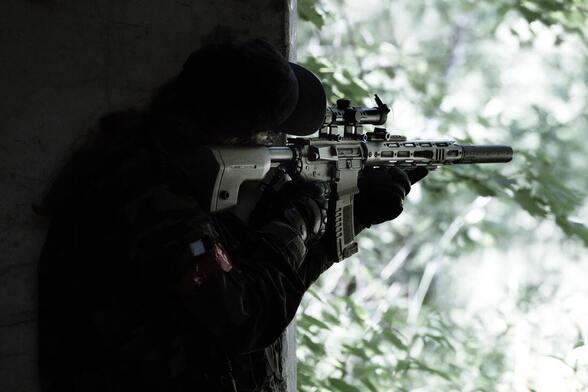|
Photo by Lucrezia Carnelos on Unsplash The best writers read. A lot. Reading books aids an author in many ways. It helps to explore ideas and to find similar books in the same genre as the writer is writing. It provides an understanding of what is out there and how a manuscript that is being written compares to books by other authors. It also helps with reading critically, exploring new styles, tricks and techniques that could be used in your own writing. While reading, the writer can question why others wrote something in the way they did. How could it have been explained better? Was that scene necessary? What exactly makes this character so well written? What was the author’s thought process and how can it help me with my own writing? Here are some recent highlights from my reading list. These books were my inspiration and guided me through writing Sābanto. “Unauthorized Bread” by Cory Doctorow “Paid For” by Rachel Moran “Brave New World” by Aldous Huxley “Animal Farm” by George Orwell “1984” by George Orwell “The Windup Girl” by Paolo Bacigalupi “The Wars” Timothy Findley “Of Mice and Men” by John Steinbeck “The Cold Millions” by Jess Walter “The Book of Negroes” by Lawrence Hill “ZeroZeroZero” by Roberto Saviano “Chicago” by David Mamet “Second Life of Nick Mason” by Steve Hamilton “The Godfather” by Mario Puzo “The Sicilian” by Mario Puzo “The Godfather Returns” by Mark Winegardner “The Great Gatsby” by F. Scott Fitzgerald “Hero Found” by Bruce Henderson “The Handmaid’s Tale” by Margaret Atwood “The Hunger Games” by Suzanne Collins “Les Misérables” by Victor Hugo “War Horse” by Michael Morpurgo “To Kill a Mockingbird” by Harper Lee “Fahrenheit 451” by Ray Bradbury
0 Comments
Photo by: Daniel Stuben https://unsplash.com/photos/0U5z1uyOLS8?utm_source=unsplash&utm_medium=referral&utm_content=creditShareLink I watched the recent news from Afghanistan in horror. There are no words to describe what is happening there and how it affects the men, women and children. Afghanistan has already been declared a humanitarian crisis with at least half a million people displaced, all in a matter of days. Afghanistan is just one of many places of worsening or continuing conflict. There is Lebanon, Yemen, Mayanmar, Ethiopia, Syria, Iraq, Turkey, Palestine, Nigeria, Mali, Congo, South Sudan, Somalia, Ukraine, and many more smaller regional conflicts. 80% of the world's poorest countries are suffering, or have recently suffered, from large scale violent conflict. There are more than 82 million displaced by conflict worldwide (About 1 in 95 people). Reasons for war can be ethnicity, religion, nationalism, economic or territorial gain, and revolutions. Wars can go for years and never gain anything. The cost of war, however, is enormous. Trillions of tax dollars are spent (It is estimated that US taxpayers pay 32 million an hour to fund current military actions). War increases hunger, homelessness, poverty and deepens the medical and environmental crisis. Combined with global warming, conflicts also further increase world hunger and displace people looking for better economic opportunities. Some argue that we need to fight to protect the peace we have. War is also seen as a way to advance humanity in research and use of new technologies. Can we achieve these goals without war? Will war ever end? Sābanto takes place in a future society after fifty years of a global conflict. The front has moved through every part of the world and every country. Three quarters of the world population were killed and more than 90% of those left live in deep poverty. The war is finally over but the horrors of war are still fresh in people's minds. They want peace even though the majority of them have never experienced it. To prevent the next conflict, the world needs to drastically change and ensure that everyone has a palace to live in and they are not going hungry. Humans need to stop fighting and a solution is needed. References:
https://www.cfr.org/global-conflict-tracker/?category=usConflictStatus https://www.unhcr.org/figures-at-a-glance.html https://www.ncbi.nlm.nih.gov/pmc/articles/PMC1122271/ https://web.stanford.edu/~jacksonm/war-overview.pdf https://www.nationalpriorities.org/cost-of/war/ https://www.washingtonpost.com/opinions/in-the-long-run-wars-make-us-safer-and-richer/2014/04/25/a4207660-c965-11e3-a75e-463587891b57_story.html Photo by: Christian Stahl https://unsplash.com/photos/8S96OpxSlvg?utm_source=unsplash&utm_medium=referral&utm_content=creditShareLink Many of us would describe home as stability, safety, comfort, security and unity. It is never just a building. It is a place where memories are built. It is the foundation of our lives. Even when we struggle through life we want to return home, because it is our refuge, our hope and our shelter. It is estimated that 150 million people in the world are currently homeless, which is about 2% of the whole world population. 1.6 billion (more than 20% of world population) lack adequate housing. What is also concerning is that these numbers are rising. More and more people lack the stability, safety and comfort of having a home. There are many reasons people become homeless. Often it is due to inadequate income, not having access to affordable housing or running from personal issues or domestic violence. Mentally ill and addicted people that have trouble holding a steady job frequently become homeless. People displaced by natural disasters and violence all over the world have no opportunity to have a proper home. There is also a growing problem of hidden homelessness of people that live with others, often known as ‘couch surfing’. These people are unable to secure permanent housing, but are not accessing services and supports for the homeless and thus not counted as homeless in statistics. People without homes are at much higher risk of death, malnutrition, chronic pains, dental problems, catching infectious disease and developing mental illness. Even in first world countries treating homeless people for their health problems comes with challenges and some treatments are impossible. The homeless may not have the money to buy necessary drugs or their medication could be stolen. Prescribing bed rest is impossible and allowing them to stay in hospital is often not an option. Only a small number of people exit homelessness because having no home creates many barriers. No access to showers and clean clothes would prevent a homeless person from finding a job. A stable place of living is required for tax purposes and employers are required to obtain that information from the newly hired. Having no address creates a challenge with opening a bank account where they would receive the payment for their job. Without proof of address, a person cannot vote. The decrease of affordable housing, global conflicts and climate crises will rapidly increase the number of homeless people around the world. If the current trend continues, the number of people who are homeless or living in inadequate housing might double by 2100. The problem of homelessness cannot be ignored. Structures need to be put in place to prevent people from becoming homeless and help to provide a way out for those already without a proper home. References: https://www.habitat.org/stories/what-does-home-mean-to-you https://mahb.stanford.edu/library-item/yet-another-emerging-global-crisis-homelessness/ https://www.homelesshub.ca/about-homelessness/homelessness-101/causes-homelessness https://www.homelesshub.ca/blog/what-are-top-10-health-issues-homeless-people-face https://www.ncbi.nlm.nih.gov/books/NBK218236/ https://benchoutreach.com/2019/06/25/no-fixed-abode-the-limits-of-having-no-address/ https://locallove.ca/issues/everything-you-thought-you-knew-about-homelessness-is-wrong/ https://www.homelesshub.ca/about-homelessness/population-specific/hidden-homelessness Photo By: Khaled Ghareeb https://unsplash.com/photos/QN507MdnxRQ?utm_source=unsplash&utm_medium=referral&utm_content=creditShareLink One of the things that make the poor and rich stand out from each other is how they dress. At school there was always that kid showing off with his brand new designer shoes and new clothes; and the kid with hand me downs, worn out and repaired clothes that did not fit well. Just a glance was enough to know who was who. In Sābanto I use fashion to differentiate the poor from the rich. I use clothes as one of the status symbols because textile manufacturing has a lot of history that is relevant to the Sābanto story. Let’s take a trip back to the Industrial Revolution (1760-1840). The textile industry is booming and producing clothes on a massive scale. Weaving is improved with the use of a power loom and the cotton gin is cleaning the cotton fibers; all to speed up the process of production. Humanity is making progress! Under all that triumph of the human mind there were people that worked long hours in terrible conditions. The families were torn apart where men and women migrated to cities to work in the factories under hard conditions and often risking their lives. Kids that were employed for their small hands lost fingers or whole arms while fixing the looms. Many of them were pulled into the machines and killed. The lost and broken lives were the cost of progress. Today there are unions and safety codes that help maintain safe conditions in factories in first world countries. That is not the case however in the developing world. Sweatshops continue to exist and are common in many parts of the world. The clothes we are buying might be made by underpaid workers working extremely long hours. Many women work in these factories and the low pay is often a reason they are unable to get out of poverty. Expensive fashion companies use that labour to increase their own profit, thus the rich are continuing to exploit the poor. I want Sābanto readers to stop and reflect before they chase another fashion craze or admire someone for their designer clothes. In order to change this system we should start from ourselves. References: https://www.historycrunch.com/textile-manufacturing-in-the-industrial-revolution.html#/ https://www.nationalgeographic.org/article/industrialization-labor-and-life/6th-grade/ https://www.bl.uk/learning/timeline/item106751.html https://spartacus-educational.com/IRaccidents.htm https://www.oxfam.org.au/what-we-do/economic-inequality/workers-rights/are-your-clothes-made-in-sweatshops/ https://www.euronews.com/green/2020/07/10/exploitation-and-sweatshops-are-at-the-core-of-fast-fashion-it-s-time-to-dismantle-the-sys |




 RSS Feed
RSS Feed



